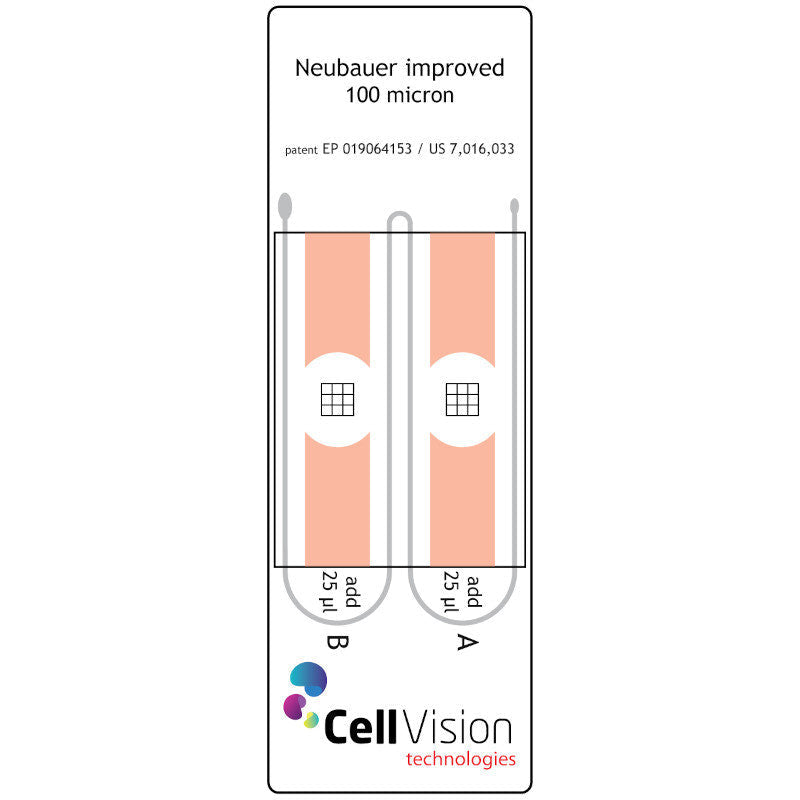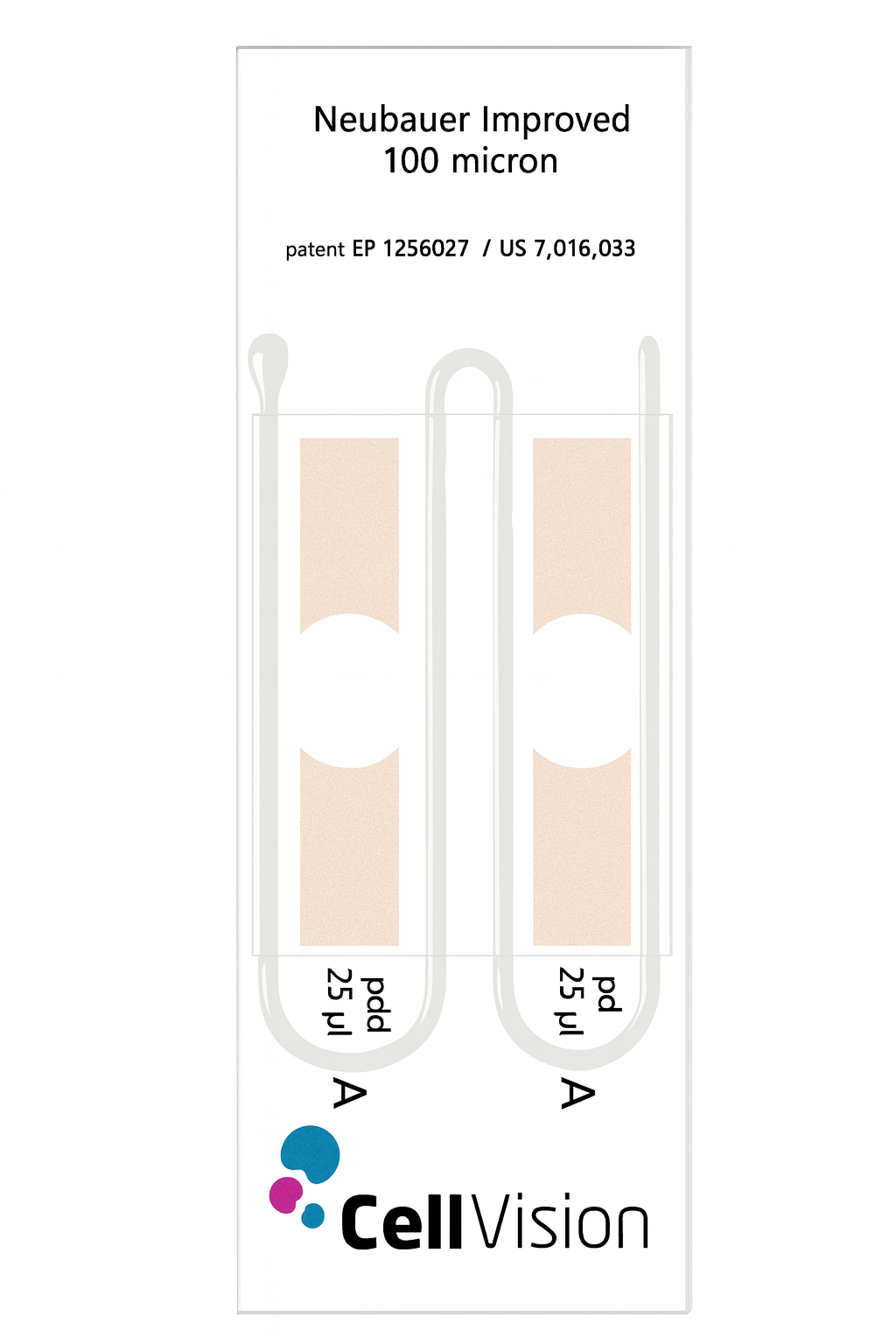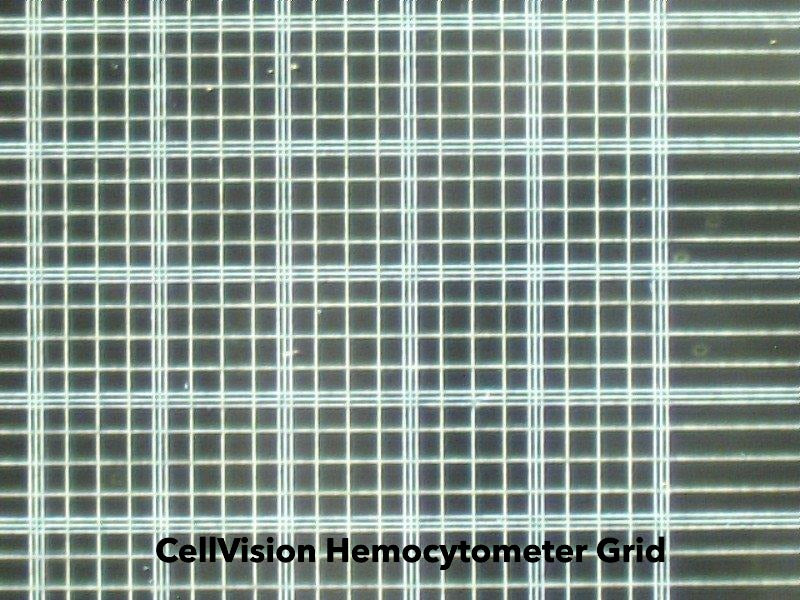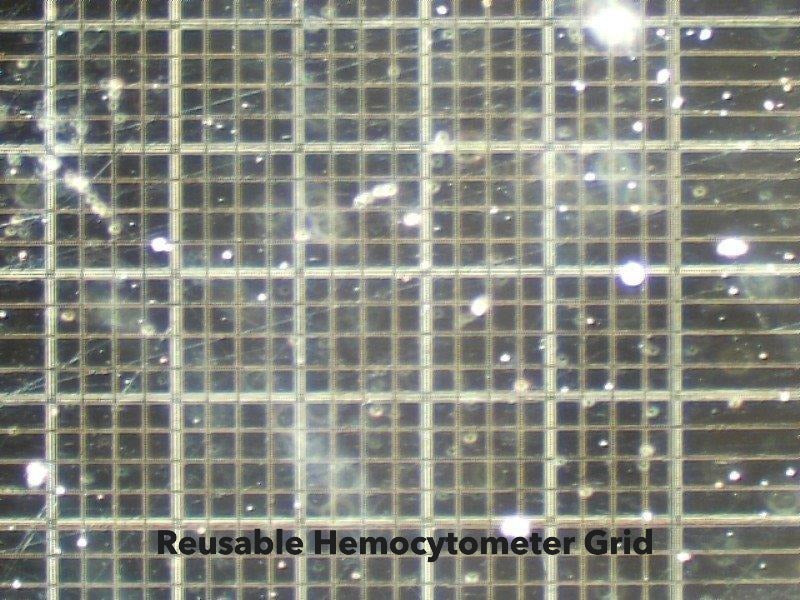CellVision Disposable Glass Hemocytometer 100 Micron Semen Analysis Counting Chamber
CellVision Disposable Glass Hemocytometer 100 Micron Semen Analysis Counting Chamber
Couldn't load pickup availability
- Standard Shipping 3-4 Days (ROI & NI only)
Precision and efficiency are paramount in clinical semen analysis. Disposable glass hemocytometers with 100-micron chambers represent the gold standard for fertility assessment. These specialised counting chambers eliminate contamination risks while providing consistent, accurate results that laboratories can depend on. This comprehensive guide explores the technical specifications, practical applications, and workflow benefits of these essential diagnostic tools.
Understanding Hemocytometers in Sperm Counting
The CellVision 100 micron Disposable glass hemocytometer is a precision-engineered counting chamber originally designed for blood cell enumeration but now widely applied in semen analysis. The 100-micron disposable glass version specifically addresses the unique requirements of reproductive medicine laboratories.
Working Principle
The disposable glass hemocytometer functions through a fixed-depth chamber (100 microns) that creates a precisely defined volume when filled with a semen sample. The chamber's design ensures that cells distribute evenly across the viewing area, allowing for accurate quantification of sperm concentration.
Key Principle: The 100-micron fixed depth creates a precisely defined volume (25 microliters per chamber), enabling accurate calculation of sperm concentration per millilitre based on the count within the defined grid area.
Unlike traditional hemocytometers that require manual assembly of the chamber and coverslip, CellVision disposable glass counting chamber comes pre-assembled with the coverslip permanently affixed at the exact 100-micron height (±3 microns). This eliminates a significant source of technical variability in the analysis process.
Advantages of Disposable Glass Chambers vs. Reusable Alternatives
Contamination Prevention
Each disposable chamber is sterile and used only once, eliminating cross-contamination risks between samples. This is particularly critical in fertility clinics where sample integrity directly impacts diagnostic accuracy and treatment decisions.
Time Efficiency
Laboratory workflows are streamlined as technicians no longer need to clean, disinfect, and dry reusable chambers between analyses. This time-saving benefit is especially valuable in busy clinical settings with high sample throughput.
Consistent Results
Manufacturing precision ensures exact 100-micron depth in every chamber, eliminating the variability that can occur with reusable chambers where repeated cleaning and handling may affect dimensional accuracy over time.
Reduced Technical Variability
Pre-fixed coverslips eliminate the technical variability introduced when manually placing coverslips on traditional hemocytometers, ensuring consistent chamber volume across all analyses.
Quality Assurance
Each disposable chamber undergoes rigorous quality control during manufacturing, with certification ensuring compliance with medical device standards. This provides laboratories with confidence in the reliability of their analytical equipment.
Enhance Your Laboratory Efficiency
Eliminate cleaning time and contamination risks with premium disposable glass hemocytometers for semen analysis.
CellVision100-Micron Chamber Design for Optimal Semen Analysis
The 100-micron chamber depth is specifically optimized for semen analysis, particularly for post-vasectomy testing where sperm concentration may be extremely low. This precise depth allows for:
- Adequate sample volume (25 microliters) for statistical reliability
- Sufficient depth for sperm cells to move freely, enabling motility assessment
- Optimal optical properties for clear visualization under phase contrast microscopy
- Precise volume calculation for accurate concentration determination
- Detection of very low sperm counts (critical for post-vasectomy verification)
Grid Pattern Optimisation
Disposable glass hemocytometers for semen analysis typically feature one of two grid patterns:
Neubauer Improved Grid
Features a 3×3 grid of large squares, each containing 16 smaller squares. This standardised pattern facilitates systematic counting and is familiar to most laboratory technicians, making it ideal for routine semen analysis.
|
Step-by-Step Usage Protocol
Sample Preparation
Liquefy the semen sample completely at room temperature (typically 30 minutes). Mix gently but thoroughly to ensure homogeneity before loading.
- Chamber Preparation
Remove the disposable hemocytometer from its packaging. Inspect for any manufacturing defects or damage before use.
- Sample Loading
Using a calibrated micropipette, draw exactly 25 microliters of the well-mixed semen sample. Place the pipette tip at the loading edge of the chamber and dispense slowly, allowing capillary action to draw the sample into the chamber.
- Chamber Filling Verification
Ensure the chamber fills completely without air bubbles or overflow. The sample should distribute evenly across the entire chamber area.
- Settling Period
Allow the loaded chamber to rest horizontally for 2-3 minutes. This permits cells to settle into a single focal plane for accurate counting.
- Microscopic Examination
Place the chamber on the microscope stage and focus using phase contrast optics at 200-400x magnification. For Neubauer grid patterns, systematically count sperm cells according to laboratory protocol.
- Concentration Calculation
Calculate sperm concentration using the formula specific to the chamber and grid pattern used, accounting for the 100-micron depth in final calculations.
- Disposal
After analysis, dispose of the used chamber according to laboratory biohazard protocols. Never reuse disposable chambers.
Important Safety Note: Always handle semen samples as potentially infectious material. Use appropriate personal protective equipment (gloves, lab coat, eye protection) when performing analyses.
Quality Control Standards
Disposable glass hemocytometers for clinical use must meet rigorous manufacturing and quality control standards to ensure reliability in diagnostic applications.
Manufacturing Standards
- ISO 13485 Certification: Manufacturers must maintain quality management systems specifically for medical devices
- Precision Engineering: Chamber depth tolerance of ±3µm to ensure volumetric accuracy
- Materials Testing: Glass must be non-toxic and non-reactive with biological samples
- Optical Quality: Glass clarity must meet standards for microscopic visualization
- Dimensional Consistency: Each production batch undergoes dimensional verification
Regulatory Compliance
- CE Marking: Required for products sold in European markets
- Lot Traceability: Each production batch must be traceable
- QualityAssurance: Packaging must maintain product quality until use
Ensure Reliable Results with Certified Chambers
Our disposable glass hemocytometers are manufactured under ISO 13485 certification and carry CE marks for guaranteed quality.
Chamber Depth Comparison
The 100-micron chamber depth represents a specific optimization for semen analysis applications. Understanding how this compares to other common chamber depths helps laboratories select the appropriate tool for their specific analytical needs.
|
Chamber Depth |
Optimal Applications |
Advantages |
Limitations |
|
20 microns |
High-concentration semen samples, motility studies |
Better for motility assessment, thinner focal plane |
Insufficient volume for low-concentration samples |
|
100 microns |
general semen analysis |
Ideal for concentration samples, |
Thicker focal plane may require focusing adjustment |
Maintenance-Free Benefits for Clinical Workflows
Time Efficiency Analysis
Studies have shown that laboratories can save approximately 5-7 minutes per sample by eliminating the cleaning, disinfection, and preparation steps required with reusable chambers. In a busy fertility clinic processing 20 samples daily, this translates to 100-140 minutes of technician time saved per day.
Error Reduction
The elimination of cleaning and assembly steps reduces opportunities for technical errors. Research indicates up to 15% reduction in coefficient of variation (CV) between replicate counts when using disposable versus reusable chambers, leading to more consistent diagnostic results.
Cost-Benefit Analysis
While disposable chambers have a higher per-test cost compared to reusable alternatives, the total cost analysis must include technician time, cleaning supplies, and quality control measures. When these factors are considered, disposable chambers often represent a cost-effective solution for busy clinical laboratories.
Workflow Integration
Disposable 100-micron chambers integrate seamlessly with manual counting protocols. This versatility allows laboratories to standardise on a single consumable regardless of their analysis methodology.
Technical Specifications
|
Specification |
Details |
|
Material |
Optical-grade borosilicate glass |
|
Chamber Depth |
100 microns (±2µm tolerance) |
|
Chamber Volume |
25 microliters per chamber |
|
Chambers per Slide |
2 (horizontal orientation) |
|
Grid Pattern |
Neubauer Improved |
|
Dimensions |
76mm × 26mm × 1.2mm (standard microscope slide) |
|
Coverslip |
Permanently affixed, optical-grade glass |
|
Packaging |
Individual slides, 25 slides per box |
|
Shelf Life |
24 months from manufacturing date |
|
Certifications |
CE marked, ISO 13485 manufactured |
Frequently Asked Questions
How does the 100-micron chamber depth affect sperm count accuracy?
The 100-micron depth provides an optimal balance between sample volume and optical clarity.
What is the cost comparison between disposable and reusable hemocytometers?
While disposable hemocytometers typically cost per chamber (€87 for a box of 25), reusable chambers cost €80-100 for a single chamber that can be used hundreds of times. However, the total cost analysis must include technician time for cleaning (approximately 5-7 minutes per use), cleaning solutions, quality control procedures, and the risk of damage to reusable chambers. When these factors are considered, disposable chambers often provide better value, especially in busy clinical settings.
How do storage conditions affect the shelf life of disposable hemocytometers?
Disposable glass hemocytometers typically have a 24-month shelf life when stored properly. Optimal storage conditions include room temperature (15-30°C), low humidity, and protection from direct sunlight. Extreme temperature fluctuations should be avoided as they may affect the adhesive bonding the coverslip to the chamber. Always check the expiration date before use and inspect the chamber for any signs of damage or separation of the coverslip.
Are there specific quality control procedures recommended for disposable hemocytometers?
While disposable hemocytometers eliminate many quality control concerns associated with reusable chambers, laboratories should still implement certain procedures. These include: (1) Visual inspection of each chamber before use to check for manufacturing defects, (2) Periodic verification of chamber depth using calibrated microspheres, (3) Regular participation in external quality assessment schemes for semen analysis, and (4) Maintaining lot traceability records for all chambers used in clinical testing.
Conclusion: Advancing Precision in Reproductive Medicine
CellVision Disposable glass hemocytometers 100-micron chambers represent a significant advancement in semen analysis technology. By combining precision engineering with practical workflow benefits, these specialized counting chambers enable laboratories to deliver more consistent, reliable results while optimising technical resources.
The specific advantages of contamination prevention, time efficiency, and consistent chamber dimensions make disposable 100-micron chambers particularly valuable for general fertility assessment. As reproductive medicine continues to advance, these precision tools play an essential role in maintaining diagnostic accuracy.
Share








